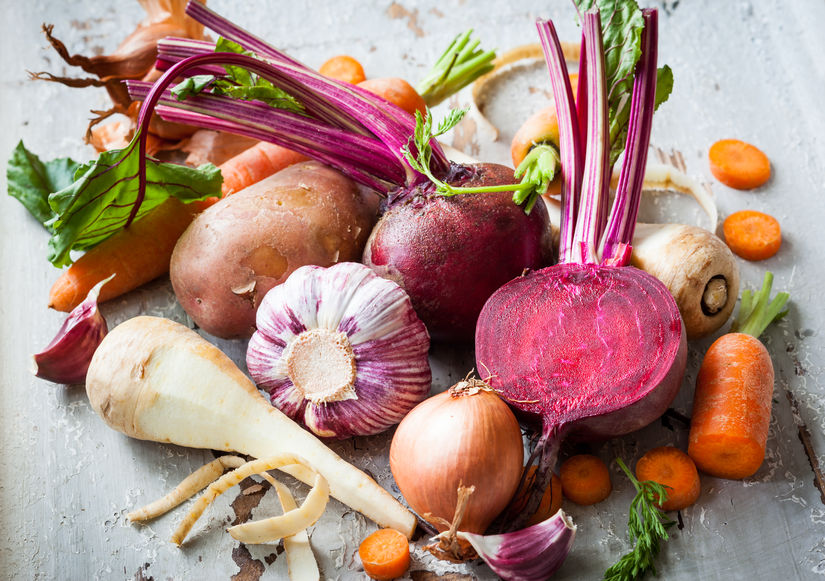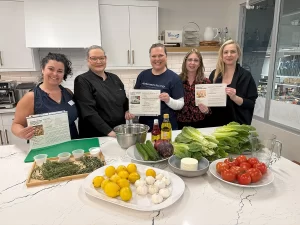
Fall is the Time for Hearty Root Vegetables


“You’re not leaving the table until every last spec of turnip is gone,” my mother used to warn as I swallowed mashed turnips – almost without chewing – to minimize contact with my taste buds.
Modern Cooking for Tasty Root Vegetables
Today’s cooking methods, however, are making these veggies a real treat alongside your autumn dishes.
Because root vegetables grow underground, they absorb a huge amount of nutrients from the soil, and are typically a good source of fibre and natural starches. Therefore, many are considered low glycemic index foods, which raise blood glucose slowly, unlike white bread for example.
This means these starchy veggies help to reduce “carb cravings” without loading up on sugar or refined grains.
What’s Currently In Season?
Now is the time to enjoy them in season – in particular carrots, onions, beets, turnips and parsnips – which are picked fresh from local growers, and are currently at their peak.
Today’s carrots include more than the large orange variety – which are a year-round staple. “Heirloom carrots are becoming popular,” said Carmen Trimarchi, president and partner of Vince’s Market. “We package a variety of different colours, and they have a little different flavour. These carrots also look nice on the plate.”
Heirloom varieties are sometimes referred to as “Eastern” carrots, domesticated in Persia as early as the 10th century. They are typically yellow or purple, with the darker colour coming from the flavonoid anthocyanin – also found in blueberries.
Beets
Beets too are undergoing a renaissance. “At one time you could only buy the standard red beet,” added Carmen. “Now you have golden beets, striped beets. The golden ones are a little bit sweeter, a little milder.”
Beets, overall, are a nutritional powerhouse. Their naturally-occurring nitrates have been shown to reduce blood pressure and enhance athletic performance. And the pigments – called betaines – may have a number of anti-inflammatory properties.
Parsnips
Local parsnips and turnips are also at their peak. And yams are on the way – although those from further south will be on most Thanksgiving plates.
Yams
Carmen adds: “It’s still a bit early for local yams because they haven’t yet had time to be kiln dried.” The process, he explains, not only brings them to an ideal moisture content, but converts some of the starches to sugars to make them a little sweeter.
You can’t talk about root vegetables without mentioning potatoes. They too include the usual varieties, like those with white and yellow-flesh, but purple is becoming more fashionable. Indeed, there’s nothing boring about the humble spud.
No matter which root vegetables you choose, they’re an important ingredient for many reasons – and they are delicious. One of the simplest ways to enjoy them is to cut into chunks, toss in olive oil and seasonings, and then oven roast. Or do a little online research, and explore the many recipes that bring out the best from their rich, earthy flavours.
As always, we welcome your questions and feedback. You can leave a comment right here on the site. Or head on over and join in the conversation on Facebook (remember to ‘Like’ the page) and Twitter. If you haven’t already signed up to receive our weekly news delivered right to your inbox (including the blog, our weekly product feature, signup for our Coterie Program, and our recipe of the week), you will find the signup by clicking here.
Until next time,
— Neil






